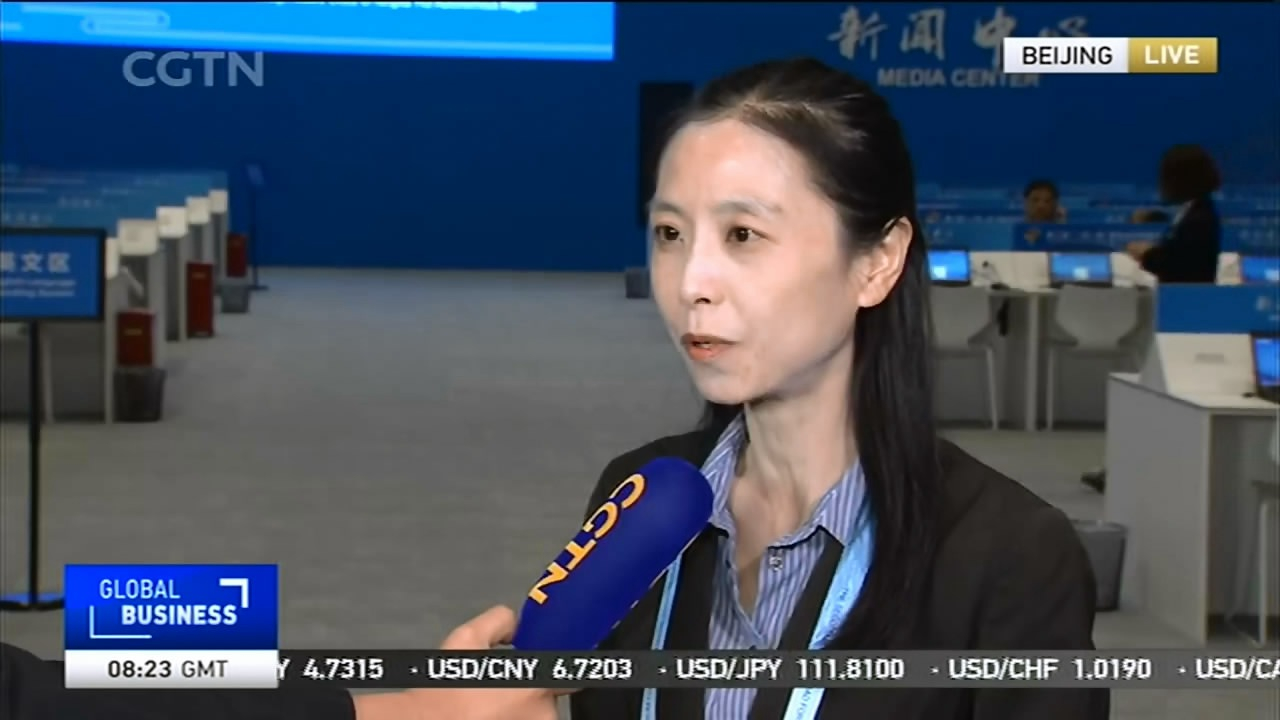
Economy
21:22, 24-Apr-2019
Debunking China Myths: BRI inspires local growth and welcomes private companies
Updated
22:34, 24-Apr-2019
CGTN Global Business
02:06

The second Belt and Road Forum (BRF) for International Cooperation will kick off Thursday in Beijing. Experts affirmed that the Belt and Road Initiative (BRI) projects have been releasing the development potential of local economies; in the meantime, experts believe that engagement of private companies will further inspire the potential of BRI.
BRI accelerates local development
The BRI was originated in China, but it is open to all partners. Government data indicated that China has signed 17 free trade agreements with 25 countries and international organizations by the end of 2018. Data also showed that China has built up 82 industrial parks overseas together with other BRI countries and regions. Those parks are valued at over 30 billion U.S. dollars.
Li Yong, a current affairs commentator, outlined three "basic things" that BRI could bring to the local economy: infrastructure, electricity and industrial cooperation.
"All those infrastructures bring countries together, and bring people used to be separate by lack of railway and road together… The BRI brings electricity to some countries lack of electricity capacity… The industrial cooperation of BRI helps build the needed industrial capacity and facilitate technology transfer," Li said.

CGTN discusses with Li Yong (L), a current affairs commentator and Wang Hongqi, Chief Business Officer of BGI Genomics (R). /CGTN Photo
CGTN discusses with Li Yong (L), a current affairs commentator and Wang Hongqi, Chief Business Officer of BGI Genomics (R). /CGTN Photo
"There are already 46 technology transfer agreements and five regional technology transfer platforms," he added.
Many countries in Asia, Europe and Africa have already signed up for the program, as it is in line with the development strategy of those nations. The top development framework that BRI is closely connected to include Eurasian Economic Union, the Juncker Plan, Mongolia's Prairie Road development strategy and Poland's Amber Road development strategy.
There is a rumor that Chinese workers don't engage with local people. Li explained that while some Chinese failed to communicate with local people, "it's not because the lack of willingness," but the lack of language skills.
He remarked the significance of communication. "Communication is definitely important and necessary. Today lots of improvements have been made. And as the projects develop, there is continuous need for the local workers to communicate with Chinese. So I don't think this is a big issue," he told CGTN.
07:05

BRI welcomes private companies to join forces
One of the biggest highlights of this year's forum is the involvement of the business community, whether it's Chinese companies or global enterprises.
"Without private companies, the BRI projects cannot realize full potential," said Dany Qian, VP of JinkoSolar.
She explained that the private companies are more rational and more concerned about economic feasibility, in terms of making business decision. And that will be an advantage when engaging into the BRI projects. Based on her words, JinkoSolar's production facilities in the BRI countries and economies generated “revenue of overall 60 million U.S. dollars annually” and created 5,900 local jobs.
Meanwhile, private companies can benefit from participating in the BRI projects, according to Wang Hongqi, Chief Business Officer of BGI Genomics.
"Private companies like us have been benefiting from participating in the BRI projects. For example, we work with Russia Direct to build a large genomic center in Moscow to improve the health care for local people," he said.

CGTN discusses with Dany Qian, VP of JinkoSolar. /CGTN Photo
CGTN discusses with Dany Qian, VP of JinkoSolar. /CGTN Photo
Moreover, green economy is one of the key areas along the BRI, according to Qian. She claimed that "from the very beginning, the BRI was positioned at green BRI. It is promoting projects for green and low-carbon infrastructure and encouraging investments in environment and climate-friendly industries."
For example, "increasing population and fast growing economy determine the strong and robust demand for electricity," while many countries and regions have abundant renewable resources, such as solar, but without high percentage of solar-driven electricity.
"Most countries and regions are short of gas and coal, and rely heavily on import. So the coal-fired or gas-fired electricity is quite expensive. 80 percent of countries and regions along the BRI have rich solar resource, which means solar-driven electricity is cheaper than the traditional way," she explained.

SITEMAP
Copyright © 2018 CGTN. Beijing ICP prepared NO.16065310-3
Copyright © 2018 CGTN. Beijing ICP prepared NO.16065310-3